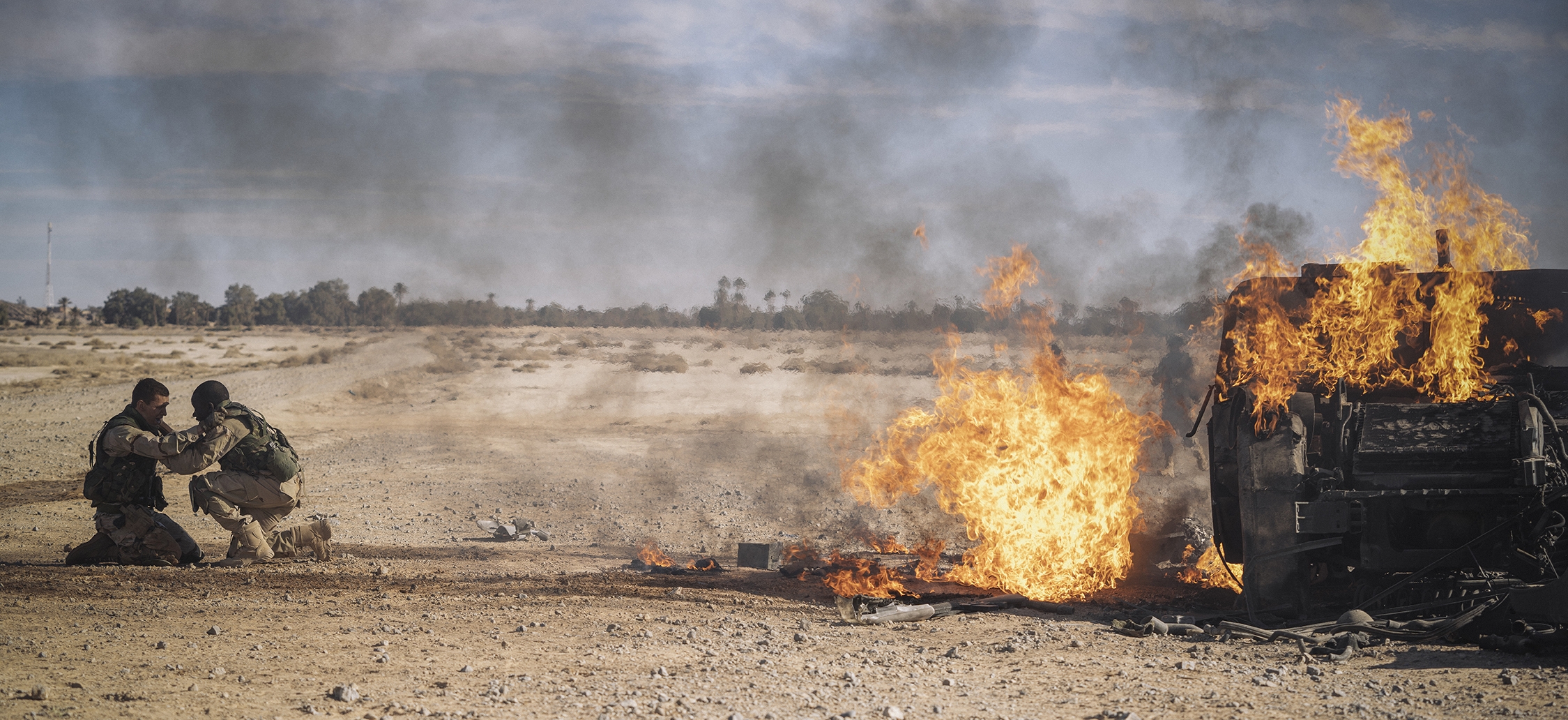
Cherry: Broken Soul
Newton Thomas Sigel, ASC and the Russo brothers chart a Gulf War vet’s chaotic journey.

Photos by Paul Abell, courtesy of Apple TV Plus
Directors Joe and Anthony Russo, best known for directing four big-budget films in the Marvel cinematic universe, including the record-setting Avengers: Infinity War and Avengers: Endgame, have shifted gears and embarked on a smaller-scale project, Cherry, which presented the brothers with terrain both familiar and new. The story, adapted from the 2019 semiautobiographical novel by Nico Walker, is set mainly in the directors’ hometown of Cleveland, and follows a Gulf War veteran (played by Tom Holland and referred to by the filmmakers as “Cherry,” though he’s never referred to by name in the movie), whose life is ravaged by opioid addiction — a national epidemic Joe describes as “very personal for us. We have family who are recovering from it and family who have died from it.”
In its focus on one protagonist, whose perspective is intimately rendered, Cherry marks a departure from the ensemble-based storytelling that has defined the directors’ career so far. However, Anthony observes, “Cherry is a single subjective experience, but how the character perceives his environment changes quite dramatically through the course of the film. By expressing that cinematically, I think we found a way to explore multiple perspectives, even though we had a single character to explore them through.”
“Anthony and I get most excited by trying
to disrupt narrative and find new
ways to tell stories.”
— co-director Joe Russo
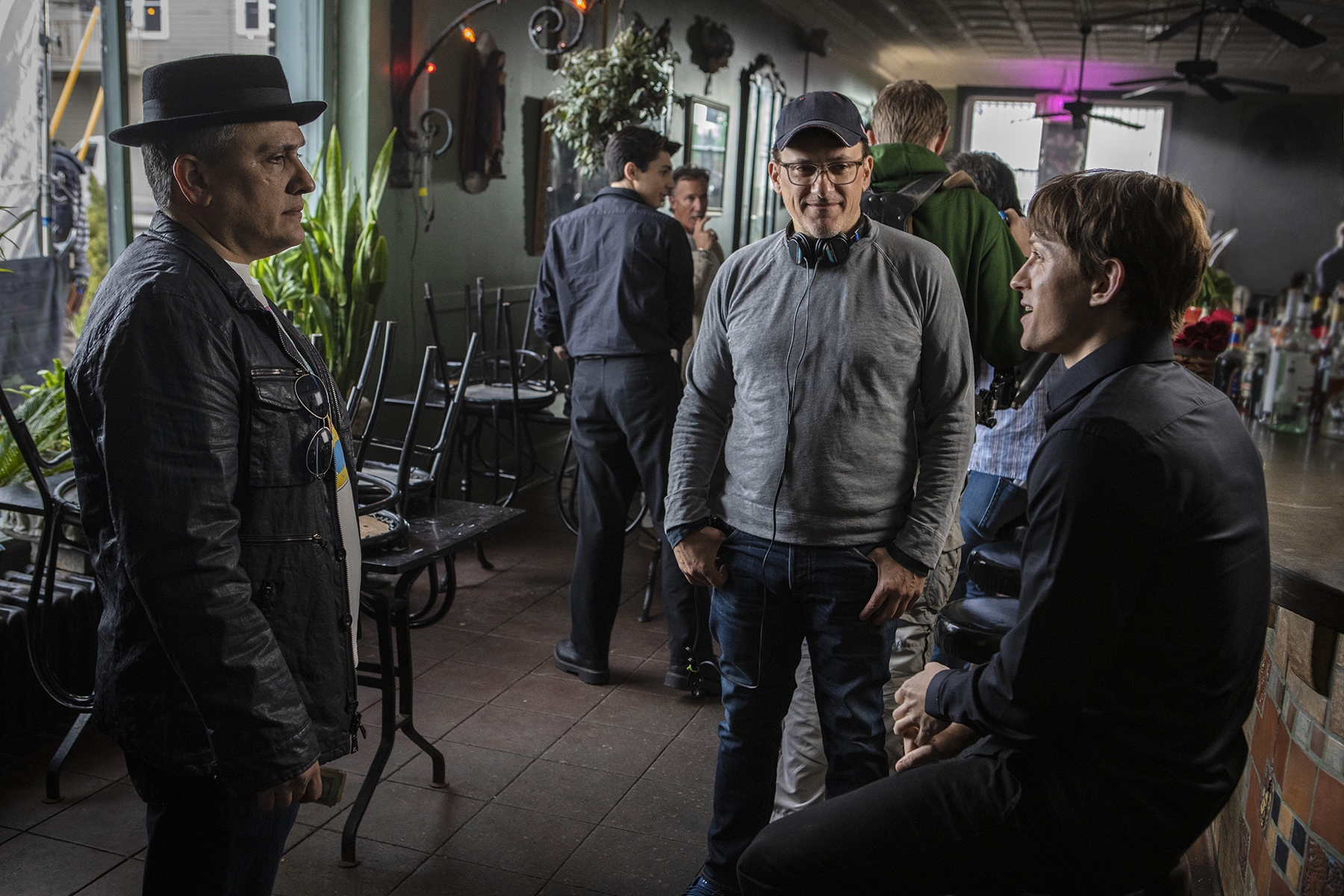
Compared to the Russos’ Marvel projects, which also include two Captain America sequels — The Winter Soldier and Civil War — Cherry presented an obvious difference in scale. The brothers knew it would also be “a massive experiment in structure, tone and execution,” says Joe. They were in the midst of producing Extraction, directed by Sam Hargrave and shot by Newton Thomas Sigel, ASC, when they decided to make Cherry, and they immediately offered the job to Sigel. “Anthony and I get most excited by trying to disrupt narrative and find new ways to tell stories, and Tom has always been a cutting-edge technologist and a very adventurous director of photography,” says Joe. “We needed someone with his confidence and experience to pull Cherry off.”
“I was fascinated by the book’s use of subjectivity and its kind of ironic look at life.”
— Newton Thomas Sigel, ASC
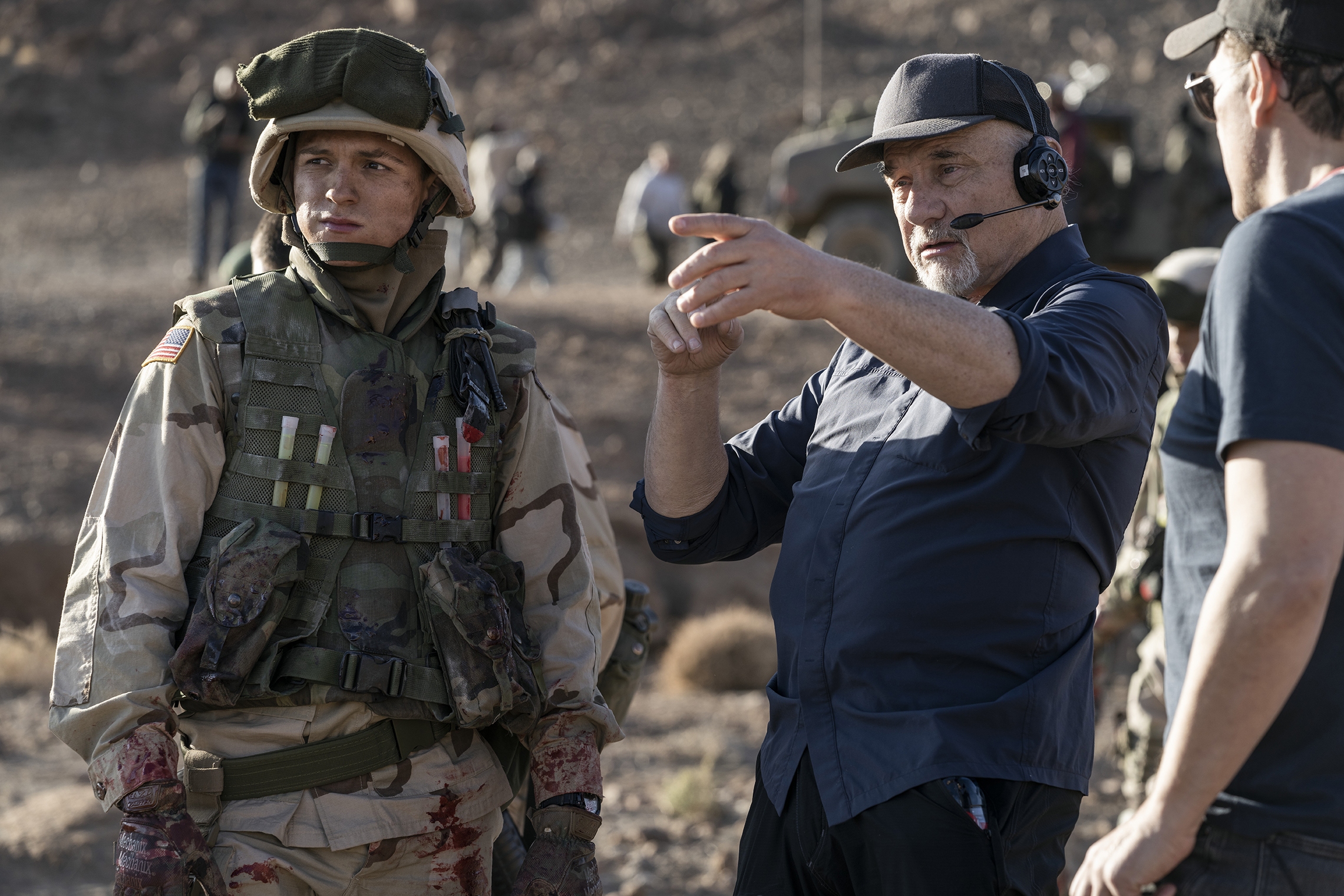
Equally well-versed in superhero movies thanks to his experiences shooting four X-Men installments and Superman Returns, Sigel embraced the opportunity to work on a personal project like Cherry. “Nico’s novel is really tough, but I thought it displayed a unique voice — I was fascinated by the book’s use of subjectivity and its kind of ironic look at life,” he says. Then he read the script, cowritten by Angela Russo-Otstot (the directors’ sister) and Jessica Goldberg, “which took it another level and elevated the element of heart and soul in it. That, in conjunction with the casting of Tom Holland, who naturally brings those qualities to a role, made it much easier for me to embrace the project and find the heart in it.”
Cherry unfolds in chapters, and the Russos wanted each to have its own look and feel, shaped by the protagonist’s state of mind. Joe explains that Cherry’s trajectory begins with him as a college student in love, then shifts to his military training; he subsequently endures the horrors of war, struggles with PTSD, partakes in drugs and criminality, and ultimately finds himself incarcerated. “We want-ed to immerse the audience in that journey,” he says. “We also wanted to create empathy. Cherry makes some unlikable choices, and we wanted the audience to move through the story with him feeling empathy.”

Another mandate was to find ways to visualize Cherry’s psychological detachment, a sense of distance from others that recedes when he becomes a criminal. “A lot of the charm of Nico’s novel comes from the fact that the character’s inner experience is incongruous with his external experience,” says Anthony. “We wanted to maintain that, to explore a character who’s out of sync with what’s happening around him.” They also wanted to convey that Cherry “is struggling against an existential threat that’s much larger than he is — that was elemental to how we thought about the narrative,” Anthony adds. “Fate,” Joe emphasizes, “is critically important to this movie.”
The key crew Sigel assembled for the Cleveland-based shoot included longtime gaffer Bob Krattiger and new collaborators such as A-camera/Steadicam operator Geoffrey Haley (a veteran of several Russo productions), key grip Jim Shelton and A-camera 1st AC Dan Schroer. Aerial specialists/drone operators Tim Sessler, Kevin LaRosa Jr. and Michael FitzMaurice were instrumental in achieving some of the overhead perspectives the Russos favored to suggest what Joe calls “the oppressive sense of fate hanging over Cherry, diminishing him.”
“Here’s this nice, typical all-American neighborhood and here’s our main character — and he’s a mess.”
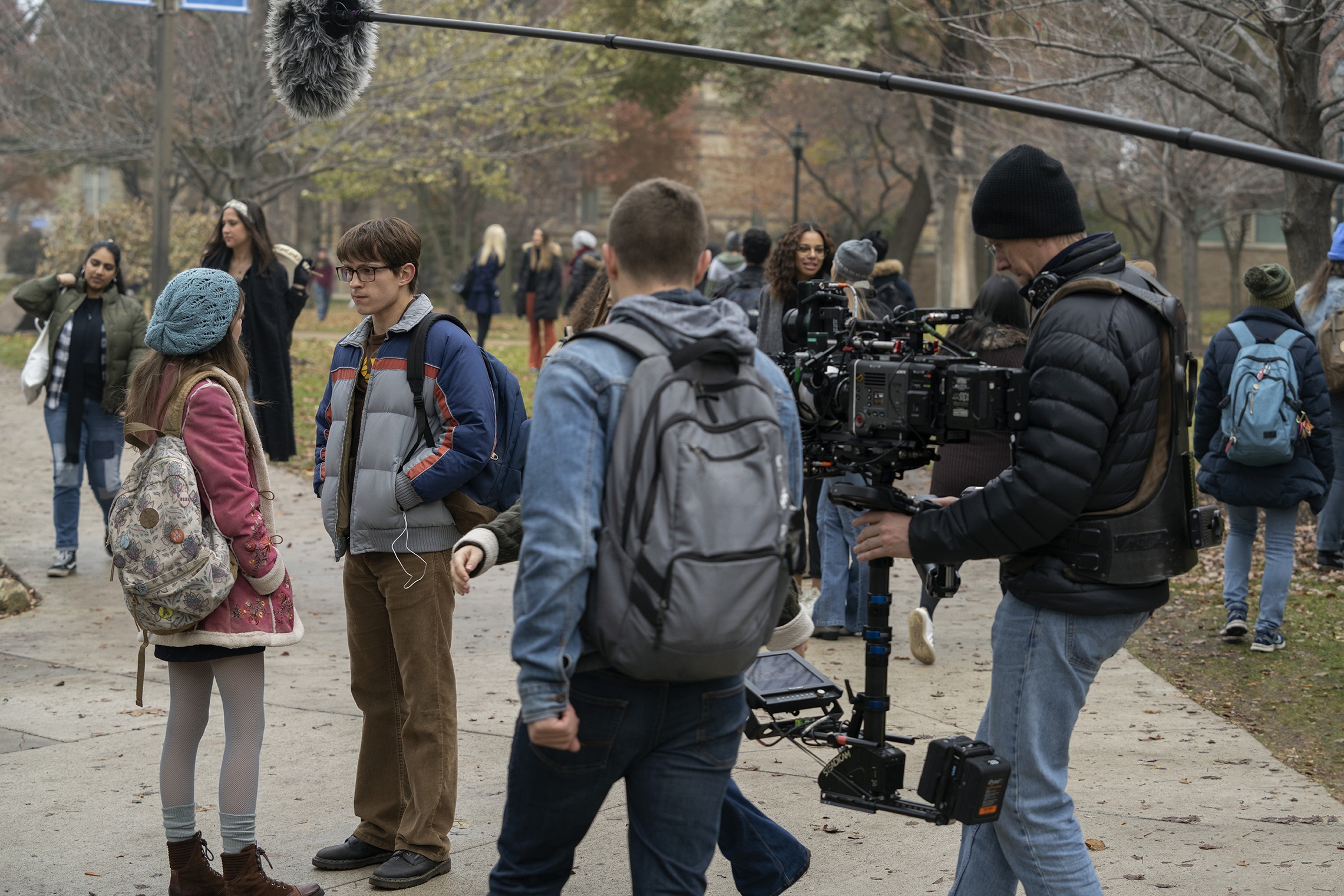
Two notable drone shots descend to ground level and become handheld moves. Cherry opens with one of these: The camera flies toward the city and then directly over a neighborhood, looking straight down, and then dives into the neighborhood, revealing kids on bikes and other signs of life as it travels along a street lined with houses. It stops in front of one, as Cherry, thin and haggard, steps out the front door. He approaches the camera, walking into a medium close-up and looking straight into the lens. “First impressions of a character are important, and I like to put a lot of thought into that moment,” says Sigel. “Here’s this nice, typical all-American neighborhood and here’s our main character — and he’s a mess.” To get the shot, Sessler flew an Alta drone equipped with a Hawk 45mm V-Lite lens, and when it reached the front of Cherry’s house, Haley grabbed it and finished the move. “That shot is about the world, about the setting, but also about finding an individual among all these people to tell a story about — and it’s just one story of thousands that are this harrowing,” says Joe.
“I’ve come to love large format as much for the lenses it forces one to use as anything else,” says Sigel, who shot Cherry in 6K with a Sony Venice. “To put a 50mm three feet from an actor and have this great field of view without distortion is terrific; it reminds me of medium-format stills photography.”
Throughout the shoot, Sigel set the look for dailies by applying a baseline film-emulation LUT he developed with Company 3 and tweaking it for each chapter. Sigel performed the final color grade at Company 3 with colorist and ASC associate Steve Scott.
The movie’s emotional spine is Cherry’s relationship with Emily (Ciara Bravo), and through testing at Keslow Camera, Sigel determined Todd-AO anamorphic lenses should be “the core of our look.” He recalls, “Nothing else had that romantic, beautiful, creamy, soft fall-off. It’s a fairytale quality I thought was perfect for this story. Each chapter has its own visual recipe, but we start with the Todd-AOs and come back to them.”
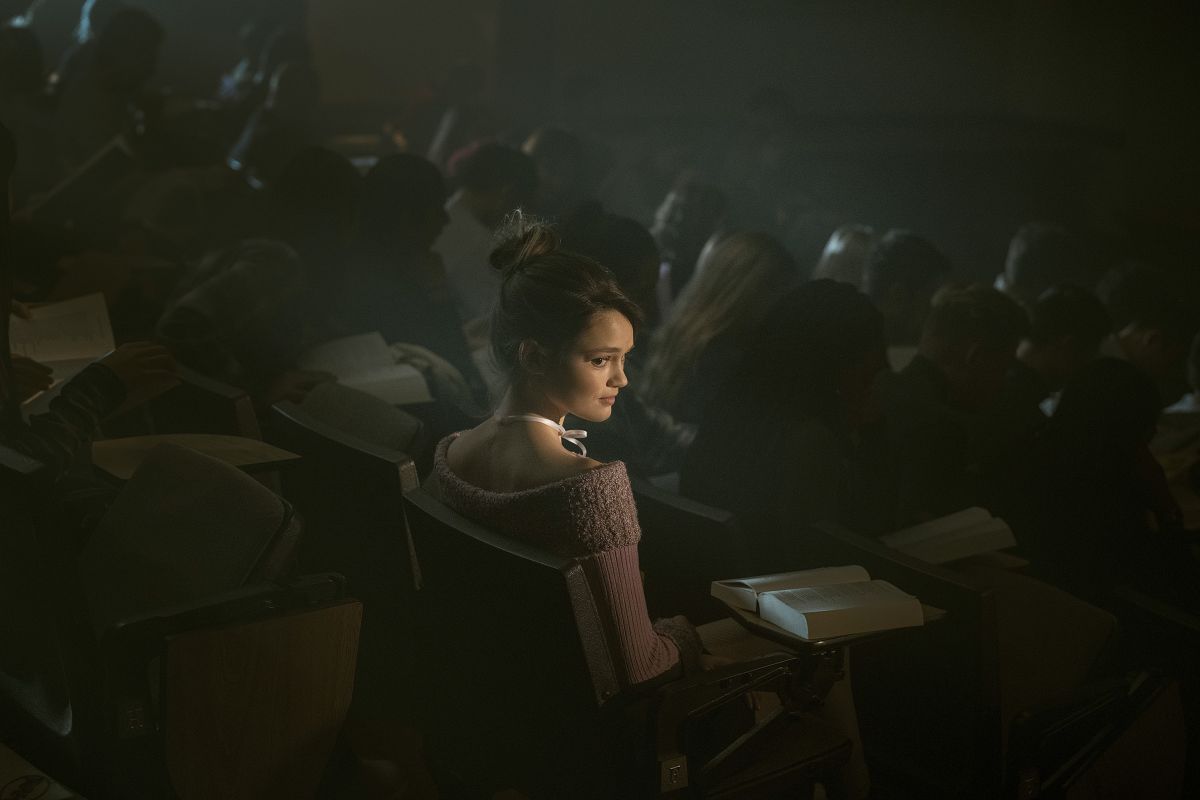
Sigel also selected a Sigma 14mm Cine lens, Leitz Cine M 0.8 Series primes and Hawk class-X primes, as well as some specialty lenses he chose to punctuate pivotal moments in Cherry’s story. One of these moments is his first conversation with Emily, which takes place outside after they’ve sized each other up in the classroom. When Haley moved in for close-ups, Sigel switched to a Lomography 55mm Petzval MKII lens. “Everything else is falling away and there’s just the two of them,” Sigel says. “The center of the Petzval is actually quite sharp, but it falls off beautifully, especially when you shoot wide open and have a background with a lot of small detail like we did.
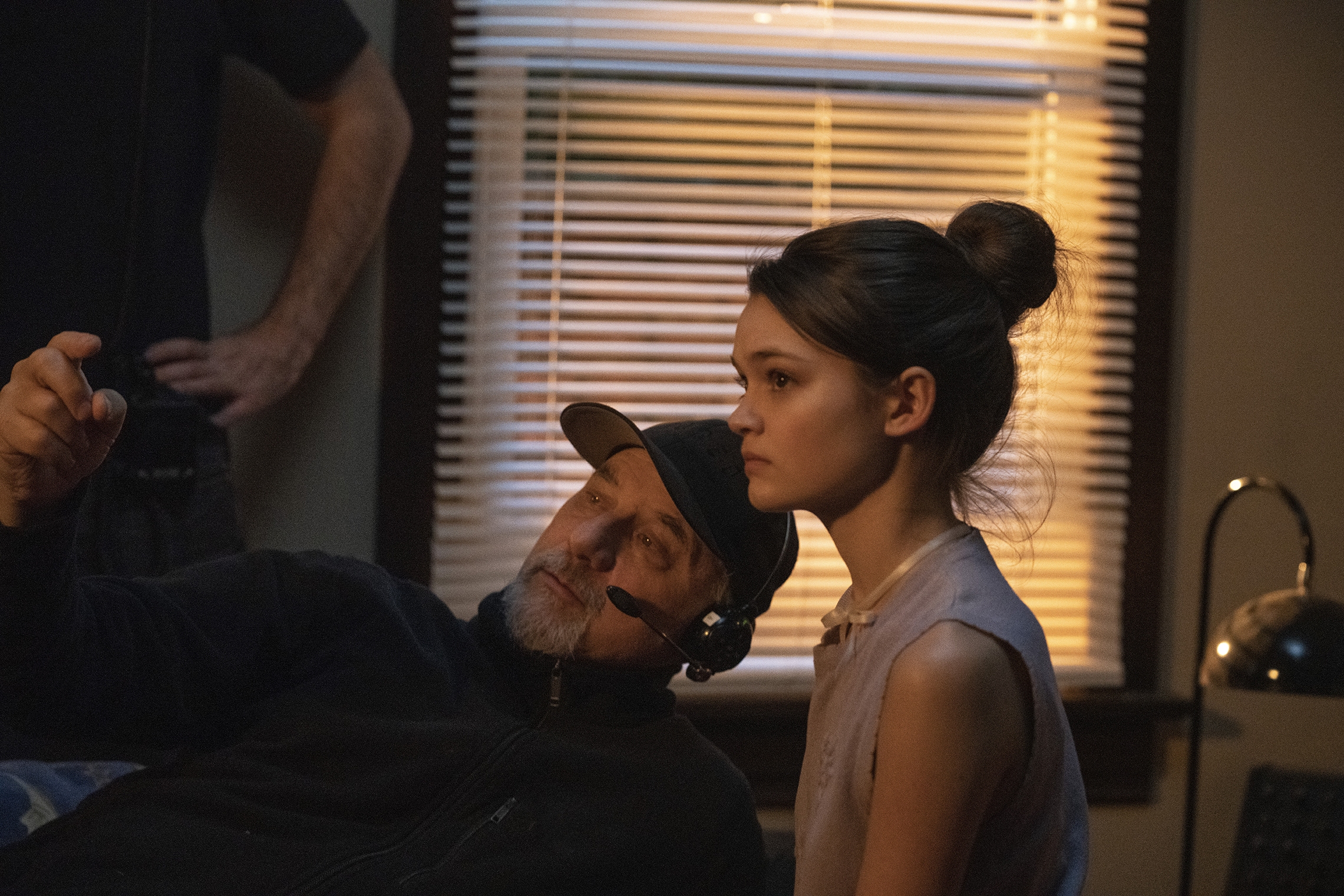
“Cherry is an anamorphic film, but we switched to spherical for the sections where he goes to basic training and off to war in Iraq. The shift was meant to emphasize a kind of dislocation Cherry experienced in environments that were so alien to him. For the basic-training scenes we used the spherical 14mm Sigma in full-sensor mode, which created an uncomfortable proximity and distortion. For the Iraq scenes, which we shot in Morocco, we switched to the Leica M-Series, a classic staple of photojournalists before zoom lenses came around. When Cherry comes home from the war, we go back to the anamorphic [look] that the movie began with.”
Early in their acquaintance, Cherry encounters Emily at a party, where he’s high on Ecstasy. To convey that euphoria, Sigel shot infrared and color footage simultaneously with a 3ality Technica TS5 stereoscopic rig (using two Red Ranger Monstro cameras and Super Baltar lenses); then, in post, he graded the composited images to progress from a bright monochrome palette to varying amounts of color. “One Red captured normal color, while the other had the IR filter that normally blocks IR light removed and replaced with a KipperTie IR filter — which is designed to block visible light, but allow the IR part of the spectrum in. Additionally, in front of the lens we had a nearly opaque filter that still allows the IR spectrum in. To heighten the effect, we lit the actors with infrared lighting instruments, which is very strange on set, because you cannot see that light with the naked eye — only when it’s picked up by the IR-sensitive camera. The normal camera sees none of that light. By using this rig, we could begin the scene with Cherry very tripped out until he discovers Emily, who is able to ground him little by little, with the color normalizing. Having the two identical images allowed us to dial in how much IR and how much color we wanted in each individual shot. It’s quite a metaphor of their relationship.”
“We thought it would be compelling to institutionalize this teller until the moment Cherry comes back to rob her, at which point she becomes human to him.”
— co-director Joe Russo

Another scene in this chapter starkly illustrates Cherry’s disconnection from the world around him. Trying to resolve a problem with his bank account, he speaks to a teller whose face is literally blacked out — she appears silhouetted in the fully lit interior. In a later chapter, he returns to the bank to commit his first robbery, and then we see the woman’s face. “It seems like a little thing,” Sigel says, “but it was actually one of the most challenging aesthetically: How do you not light her and then have her lit in a day interior in a bank?”
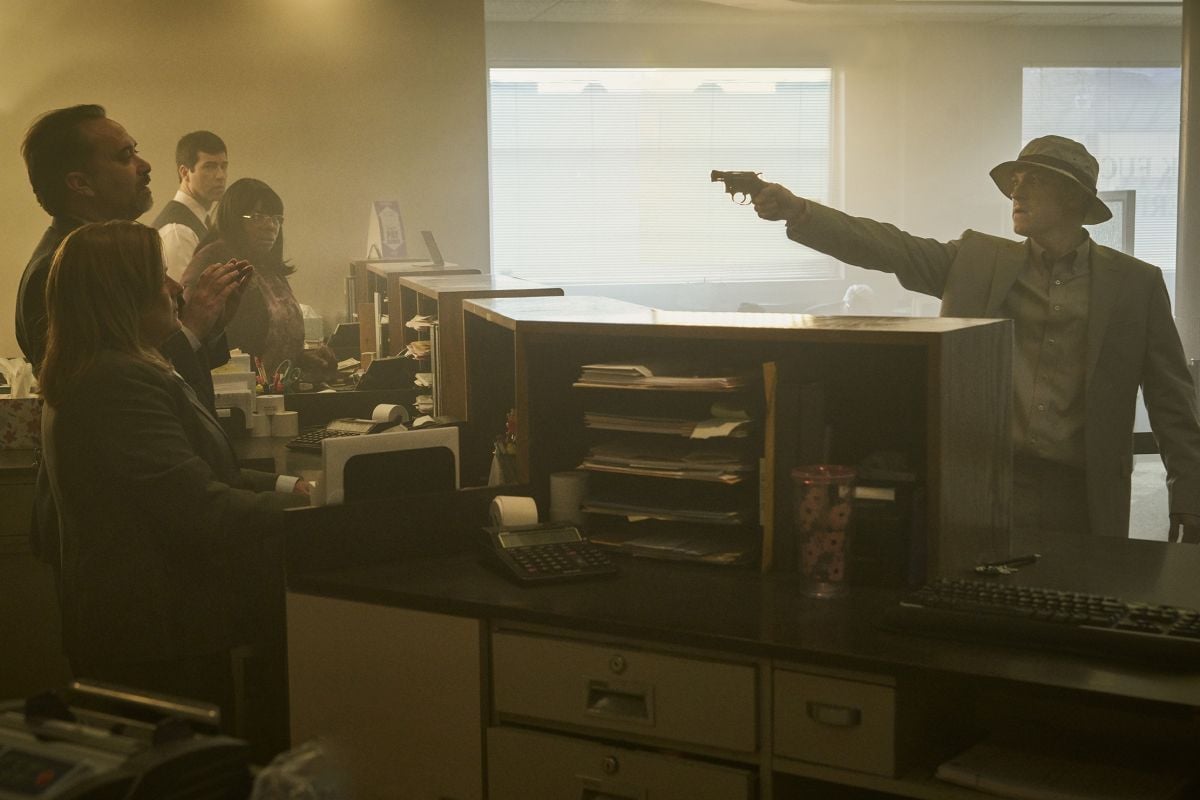
Adds Joe, “One of the biggest problems today is ‘otherizing,’ people’s tendency to not see the humanity in other people, and we thought it would be compelling to institutionalize this teller until the moment Cherry comes back to rob her, at which point she becomes human to him. It took a bit of work to figure out how to execute that, and to Tom’s credit, most of it was done in camera; there was very little CG touchup in post.”
Sigel lit the bank, a practical location, mostly from outside with 18Ks. Overhead fluorescent practicals were turned off when they weren’t in frame, and the tubes in frame were wrapped in ND so they emitted very little light, even though they appeared to be on. “Then we flagged the teller very precisely so only her face was obscured,” Sigel says. “We had a lamp for her that we cut off everywhere else in the set, and we also flagged her ambient light while letting it hit the area immediately around her. The light is off, but when Cherry comes back for the robbery, we dim it up and expose her face.”
To emphasize the rigors of basic training shown in another chapter, Sigel shot only with the 14mm Sigma and used static shots and grounded, linear camera moves; in addition, the 2.39:1 aspect ratio narrows to 1.50:1, and the warm colors of the preceding chapter drain away. “Cherry’s decision to enlist proves to be regrettable, and there’s a feeling of the walls closing in,” says Sigel.
“Cherry comes out a very different man.”

When Cherry lands in Iraq, the widescreen frame is restored, and Sigel transitions to Leitz Cine M 0.8 primes and “more neutral color.” He adds, “Leicas are the tried-and-true lenses photojournalists have used for decades, and this was meant to be a certain nod to documentary — but as if David Lean were filming it!”
Cherry’s first combat experience is depicted with a minute-long Inspire drone shot that echoes the film’s opener: The camera flies over a mountain range where insurgents are firing on Humvees below, descends to find two American soldiers, follows one as he runs through enemy fire, and then moves on to reveal more Humvees coming up a hill and into the fray, stopping at one when Cherry hops out of it. The shot holds on Cherry, capturing the shock on his face, and doesn’t cut until his commanding officer comes over and grabs him.
“The shot was designed to both set the table for his experience in Iraq and go from the macro to the micro, to show the scale of the horror and then go right into Cherry’s head,” Sigel says. “We did two handoffs. When the drone comes over the hill, we see a U.S. soldier firing from a hidden position, and that’s Greg Baldi, who was normally doing the arm-car work with me, in costume. As the drone passes him, Greg drops his weapon and grabs the drone, holding it for the two-shot of the U.S. soldiers. When one of those soldiers starts to run, Greg lets go of the drone, and it follows the soldier through all the chaos. At one of the last Humvees in the row, Geoff Haley, also in costume as a soldier, jumps out and grabs the drone just as the other Humvees are coming up over the hill. Geoff stops right in front of Cherry when he hops out.”
After Cherry returns to Cleveland and turns to drugs to mitigate his anxiety and depression, compositions become increasingly asymmetrical, and in an especially vivid shot of the character high on oxycodone, he appears to swim through his bedroom as the back-ground swirls behind him. “That’s an important scene because it’s meant to sell that he’s gone beyond trying to deal with PTSD into re-ally dangerous behavior,” Sigel says. “Jimmy Shelton built a rolling rig that Tom could stand on, and we attached the camera to it so it stayed fixed on him as he floated his body around. It didn’t feel like walking, but it didn’t have the rigid quality of a bodycam. I spotted this massive convex lens on set — more of a diopter, really — that turned out to be what the set medic was using to remove splinters from fingers. We put that funky glass in front of the camera, I lit the windows very bright with [Arri] T12s and Par cans, and we pushed that rig through Cherry’s journey. It’s a very hallucinatory effect.”
Sigel reserved the Hawk class-X anamorphic primes mostly for the epilogue, which takes place in prison and features no dialogue. “We feel the years slipping by,” says the cinematographer. “The light is cold, but there’s a glimmer of hope. Cherry comes out a very different man.”
TECHNICAL SPECS
2.39:1 and 1.50:1
Cameras: Sony Venice CineAlta, Red Ranger Monstro
Lenses: Todd-AO, Sigma, Leitz M 0.8 Series, Hawk class-X, Arri Swing Shift, Super Baltar, Lomography Petzval
Sigel recently spoke to Lawrence Sher, ASC about his camerawork in Cherry as part of our Clubhouse Conversations discussion series:






